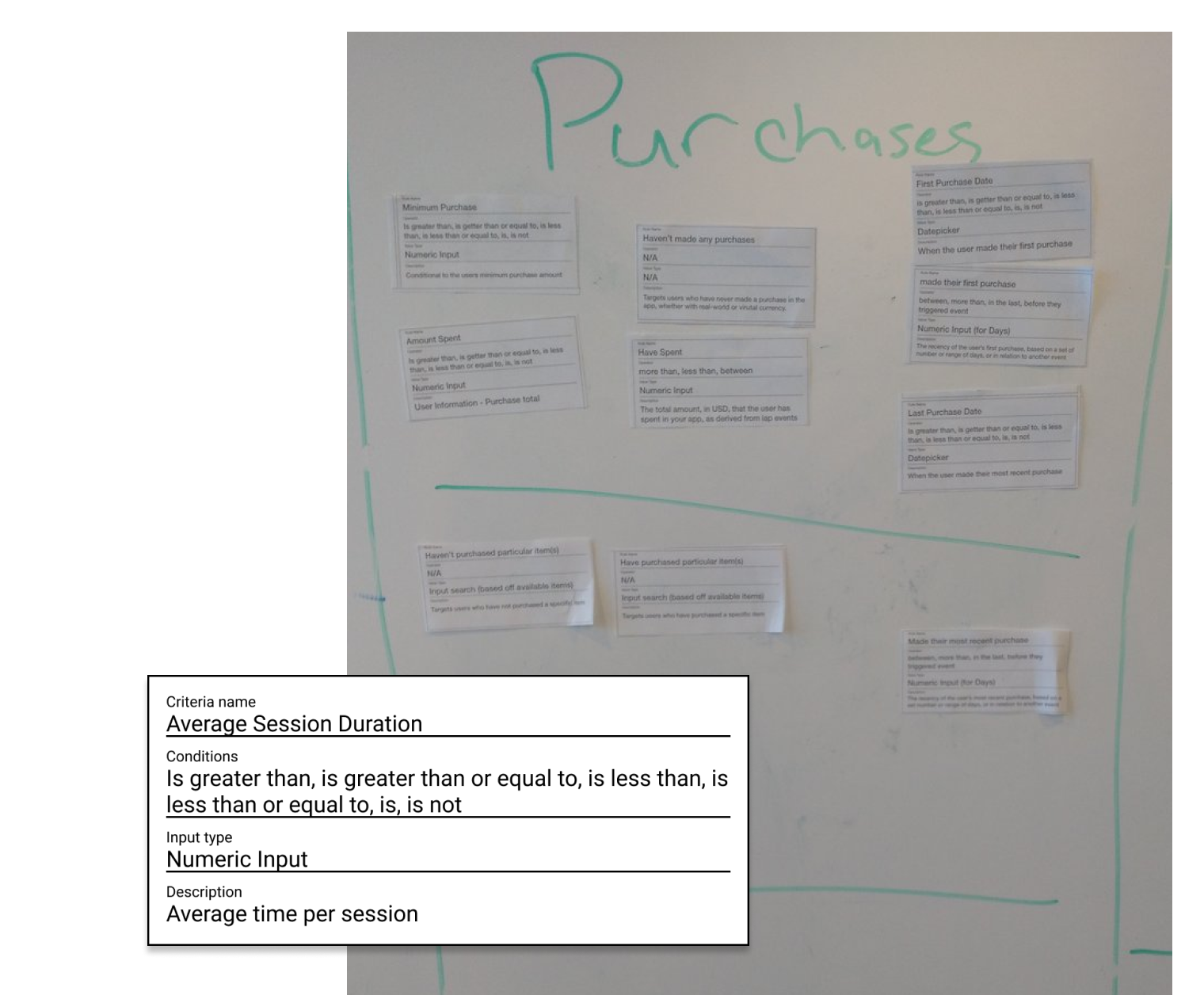Card Sort
The card sorting exercise allowed us to have stakeholders review each criterion and consider its usefulness for their team
What we learned:
- What is needed to succeed
- Where is the confusion
- Expected use cases
- Natural grouping

Improving and streamlining the player segmentation flow
Marketing Managers and Producers use the Push Notification and Interstitial tool to communicate with players within their game. Both tools have their unique approach to player segmentation.
Producers, Product Managers, Marketing Managers, Engineers and Quality Assurance Testers
Both tools had their own unique collection of criterion and rule options that prevented teams from creating a holistic design approach when communicating with the player.
Assist UX Manager with user interviews and card sorting exercises. Provide Engineering and Product Managers with designs.
User Interviews, Card Sort, Wireframes
Identified and interviewed 18 Stakeholders
Frequently talked points included:
“Every time I need to update a player segmentation ruleset, I need to update it for the push notification instance and the interstitial instance.”
“The interstitial user segmentation list of criteria did not match push notifications.”
“The list of segmentation criteria is presented in a long list with no clear grouping or alphabetical ordering.”
Lacked Clarity
Stakeholders stressed that they had no idea what some of the criterions were or how they were expected to use them within their campaigns
Inconsistent Design
Rule criterions and conditions were inconsistent between the two tools
Duplicate Work
Stakeholders were expected to build a player segmentation ruleset each the Interstitial tool and Push Notifications tool
Aligned with the Product Owner and Engineering we came to the hypothesis that users needed a unified approach to player segmentation experience between both tools
The card sorting exercise allowed us to have stakeholders review each criterion and consider its usefulness for their team
What we learned:

Rule Categories - Leveraging what we learned from the card sort, we categorized the criterion’s to the stakeholders natural mapping
Proper Criterion Conditions - Each criterion displays the required conditions
Readability - Completed rules are formatted in an easy to read format
